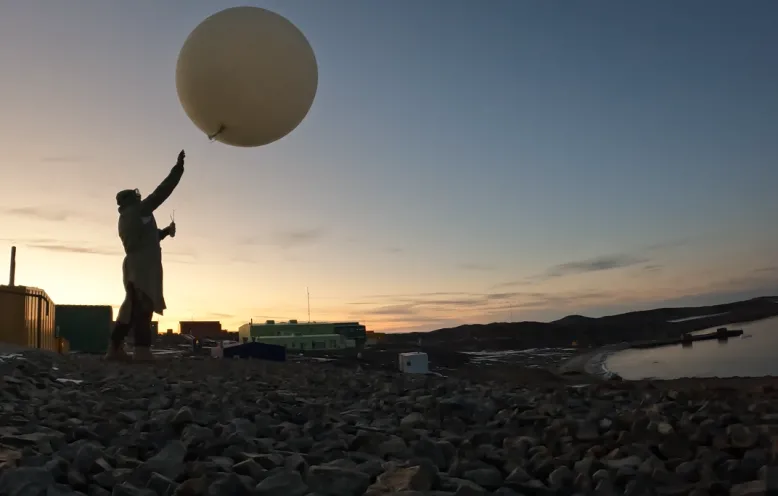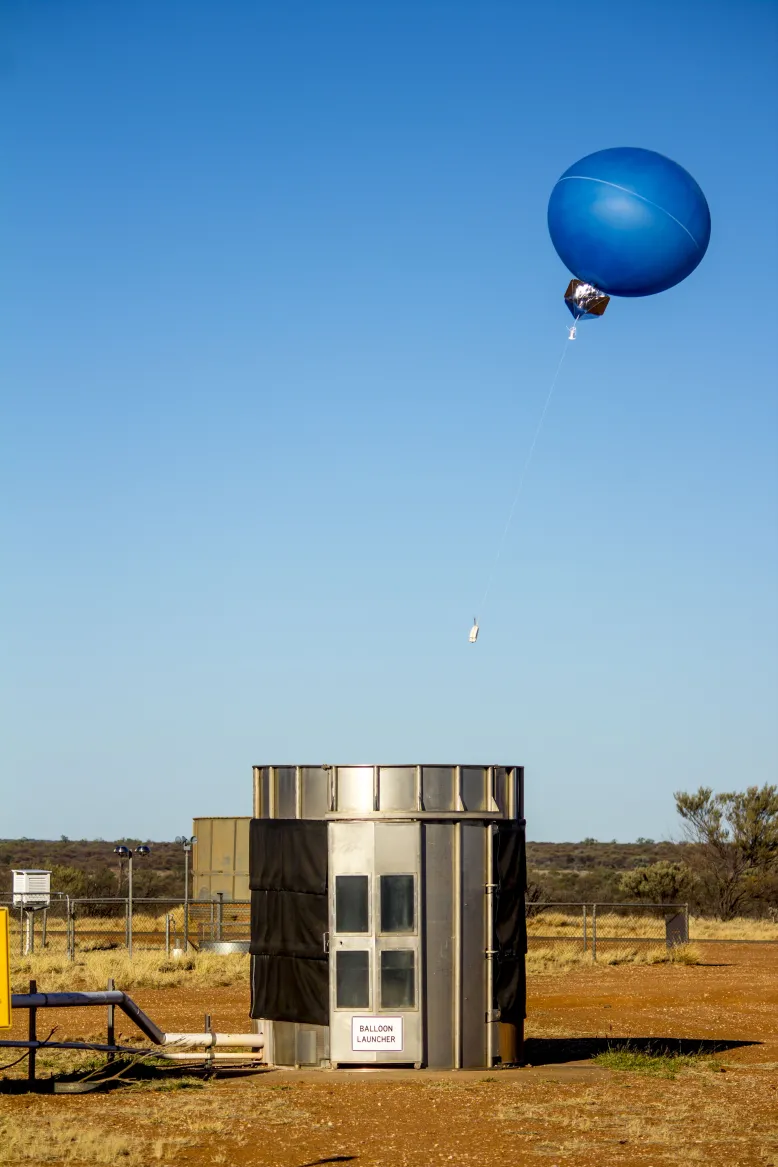During National Science Week, we're taking you from the ice to the outback to show more about the Bureau of Meteorology's field offices, the people who work there, and the science they do.
First stop, Antarctica. The Bureau has staff stationed at three Antarctic stations: Mawson, Casey and Davis, in addition to the station on sub-Antarctic Macquarie Island.
Bureau Meteorological Observer Kasey gave us an insight into life on Davis Station, the largest ice-free coastal area on the Antarctic continent, where Bureau observers conduct essential research.
"One of my favourite components of the role is undertaking the Ozone Program - each week we prepare a bespoke payload (consisting of a battery, pump and motor) to attach to a meteorological balloon and launch into the atmosphere to obtain atmospheric ozone data," Kasey said.
"This data gives us an indication of the density of the ozone layer over Davis, which is particularly important in late winter and spring when the Antarctic ozone hole forms.

Kasey launching a meteorological balloon at Davis Station
"This work is critical for monitoring the long-term recovery of the ozone layer due to the Montreal Protocol, and contributes to the Climate Record, global ozone data, as well as meteorological models and datasets which are used in a range of scientific research endeavours both internationally and back home in Australia."
Meanwhile, back at Giles Station -a remote weather observation station in the outback -is also part of the worldwide network of stations (1300 worldwide) launching balloons twice daily.
Emma and Ben, Technical Officers at Giles, explained how observations collected at Giles are crucial for the Bureau's forecasts and warnings across the country.
"The balloon-based observations provide us with precise measurements of temperature, pressure, humidity, wind speed, and direction-reaching altitudes between 16 km and 35 km in the upper atmosphere, which is about three times higher than a commercial airplane," Emma said.

The balloon launch at Giles
"Our data is vital for weather forecasting across eastern and south-eastern Australia, particularly for rain. In summer, it provides crucial data on convective situations for assessing severe storms. Giles central continental position is essential for climate measurement and forecasting across much of Australia, as well as local weather, including areas like Uluru," Ben said.
Across the Australian region, the Bureau's network of field offices varies in staff, location, and climate. Despite these differences, there is something special about each location for the people stationed there.
"My favourite part about my role here at Giles is seeing the beauty of the desert," Ben said.
"Most days it's calm and quiet and every day you are presented with a beautiful sunset to gaze upon before the beautiful night sky arrives. We also see lots of tourists out here that come from all over the country to visit our little museum and watch the morning launch."
Curious about which corner of the world a career in science and technology can take you? Bring your vision and energy to tackle national and global challenges at Australia's weather, climate and water information agency: https://beta.bom.gov.au/about-the-bureau/careers






